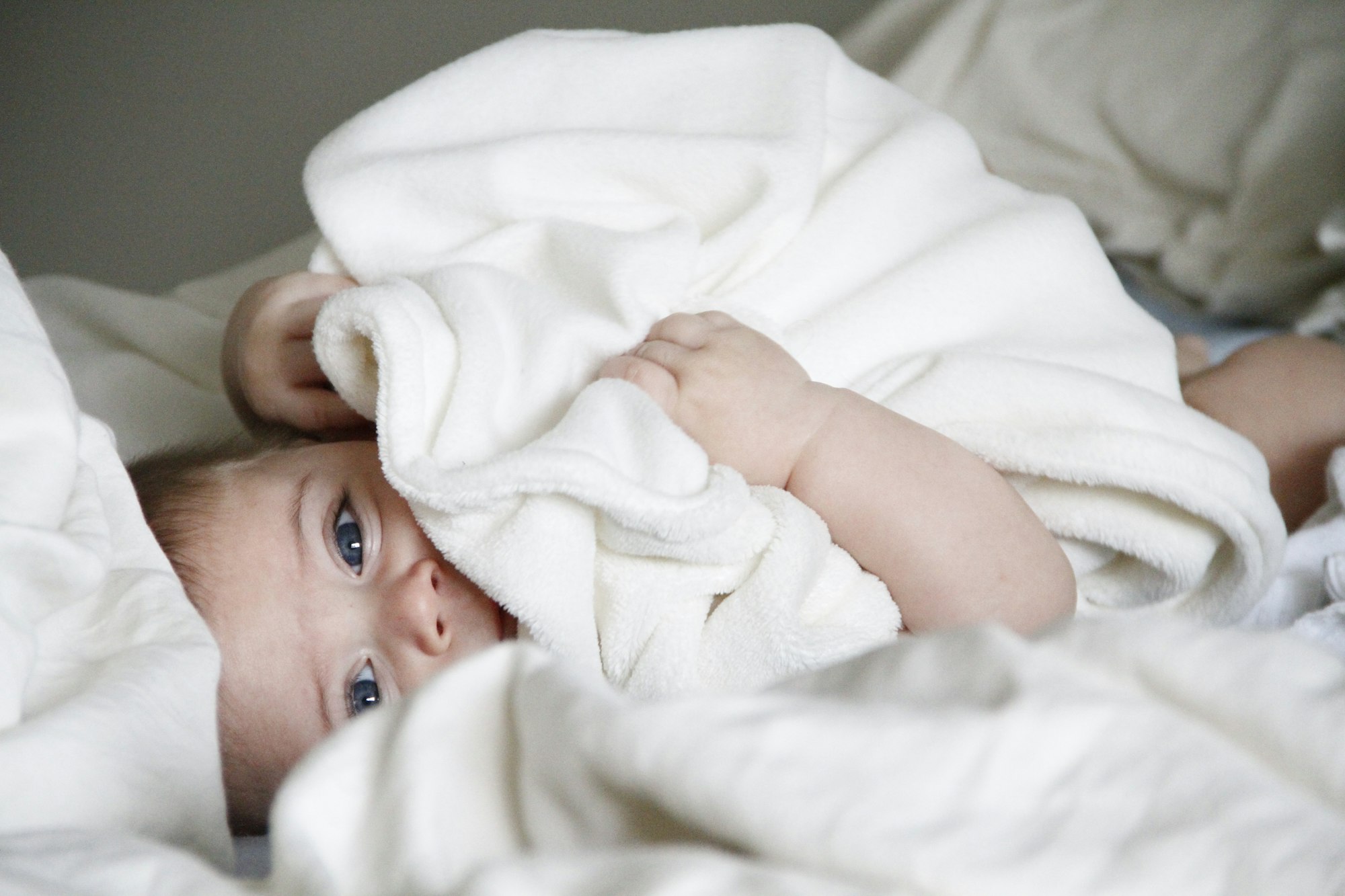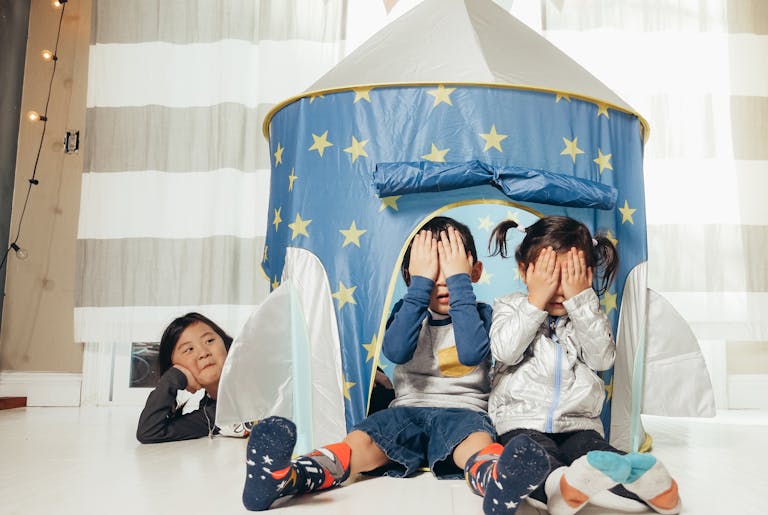Sleep. Elusive, precious, and—during early childhood—routinely disrupted. So many parents lie awake at 2 a.m., wondering what switched in their child’s sleep. If bedtime has rapidly morphed from peaceful slumber to a symphony of wake-ups and tears, you’re likely confronting the enigma of baby sleep regression. What drives this sudden upheaval? Is it developmental, environmental, or simply a passing phase? Let’s uncover the core mechanisms behind sleep regressions, break down their tricky symptoms, and chart a way forward with gentle, science-informed strategies—always keeping both your baby’s wellbeing and yours in mind.
What Is Baby Sleep Regression?
Baby sleep regression—just the phrase itself sparks concern for many parents. One moment, your baby glides through nighttime hours; the next, familiar patterns shatter. What’s happening inside your baby’s world? Simply put, sleep regression is a temporary disruption in sleep habits during phases of rapid neurodevelopment. It’s when a baby who seemed to have learned the art of long stretches of sleep starts waking often, struggling to nap, or resisting bedtime with tearful intensity.
The roots of baby sleep regression lie deep in the evolving structure of your child’s brain. As babies master new motor skills—rolling, crawling, pulling up, even babbling or recognizing faces—neural circuits blaze with activity. These surges shift their sleep cycles, increasing periods of lighter sleep and making night awakenings more common.
But here’s the reassuring part: this phase is part of healthy development. It’s ephemeral. And while the signs can be exhausting, understanding their origin transforms frustration into empathy (for both your child and yourself).
Spotting the Signs: How to Recognize Sleep Regression
You’re keeping a bleary eye on the clock; your once-consistent napper has become unpredictably restless. Classic indicators of baby sleep regression include:
- Frequent night awakenings: Your baby once slept for hours—now, you’re up every couple of hours.
- Difficulty falling asleep: Settling at bedtime stretches from minutes to what feels like infinity.
- Short or irregular naps: Predictable nap routines dissolve into fleeting periods of rest.
- Increased fussiness: Daytime crankiness spikes, often peaking around sleep times.
- More crying at bedtime: Emotional vulnerability surfaces, intensifying the bedtime routine.
Not every child will tick every box—but even one or two can be enough to jolt your household’s sleep. Why? Brain maturation alters physiological sleep cycles, pushing your baby’s sleep architecture toward lighter, adult-like cycles full of brief awakenings.
Why Does Baby Sleep Regression Happen?
You might wonder, “Why now?” Science provides several intertwined explanations, and understanding them can ease the guilt or confusion that so often surfaces.
- Physical milestones: Mastery of rolling, crawling, sitting, or early walking can dominate the brain’s nightly agenda.
- Cognitive leaps: Burgeoning language and social cognition mean your baby processes more, even in sleep. The concept of object permanence (that you still exist even when out of sight), often sparks separation anxiety and extra wakings.
- Neurological shifts: The progression from newborn REM-dominated sleep toward complex, cyclical sleep heightens sensitivity to environmental changes.
- Environmental disruptions: A new home, recent illness, teething, or even a shift in daily routine introduces “noise” that can break established sleep patterns.
- Nighttime hunger: Growth spurts—periods of accelerated physical growth—sometimes increase the need for overnight feeds.
Rather than viewing these regressions as setbacks, recognize them as outward signs of internal leaps—markers that your child’s nervous system is evolving towards greater complexity.
Ages and Stages: When Does Baby Sleep Regression Strike?
A pattern emerges: baby sleep regression tends to cluster around predictable ages, each linked to biological and developmental surges.
The Four-Month Sleep Regression
At four months, a profound transformation occurs. Sleep cycles shift from immature, newborn-style stages to a recognizable alternation between lighter and deeper phases—much like adults. This reorganization increases wakefulness, particularly during transitions between cycles. You may observe:
- Sudden, frequent waking that lasts two to six weeks.
- Shortened naps that defy previous predictability.
Pediatricians often suggest adjusting nap schedules and using safe, comforting objects (like a wearable sleep sack). Placing your baby in bed slightly drowsy, but not asleep, gradually fosters self-soothing.
Six-Month Sleep Regression
Around six months, burgeoning mobility takes center stage. As babies learn to roll, sit, and move, these motor milestones sometimes spill into nights—newfound freedom means more nighttime disruptions. Encourage plenty of floor time during the day for skill-building, which may actually lead to more settled sleep at night.
Eight to Ten Months: The Separation Anxiety Phase
This stage is notorious for separation anxiety. As your baby learns that loved ones exist beyond the room, night wakings often spike, driven by a need to check for your presence. Strategies that help:
- Daytime separation games, like peekaboo, teach your baby that you return after absences.
- Consistent, reassuring responses at night build emotional security, making solo sleep less distressing.
Twelve-Month Regression: Walking and Independence
Celebrating a first birthday often brings walking and a surge of independence. This triggers another baby sleep regression, with disrupted naps and night waking. Reinforce clear, predictable bedtime routines: a warm bath, pajamas, a soothing story.
Eighteen-Month Regression: Cognitive Overload
Dreams acquire narratives; nightmares may emerge. Language grows more complex, separation fears re-intensify, and emotional outbursts occur. Offer reassurance—short, calm responses reduce stimulation at night, while a comforting routine helps anchor your toddler.
Medical and Scientific Foundations: Why Disrupted Sleep is a Hallmark of Healthy Growth
Let’s step into the medical arena for a moment. Sleep cycles—especially after four months—are structured around alternating periods of non-REM (deep) and REM (active) phases. During developmental leaps, REM sleep increases, correlating with memory consolidation and learning. Night wakings are byproducts of these new arrangements, not failures in parenting or signs of underlying pathology.
- Object permanence is a cognitive milestone, emerging between 8 and 10 months, manifesting as intensified separation anxiety and increased vigilance at night.
- Nap transitions (such as dropping from three naps to two) can provoke temporary insomnia or fractured nighttime sleep, as the circadian rhythm recalibrates.
- Sleep onset associations—whether a parent’s presence or habitual rocking—sometimes elongate the process of falling asleep independently. Gradual alteration of these habits can support the development of sustained sleep.
Practical Strategies: Easing Baby Sleep Regression for Parents
Now, let’s get practical. How can families endure—sometimes even thrive—during baby sleep regression?
- Establish a calm, consistent bedtime routine. This might involve a warm bath, quiet reading, low lights, gentle lullabies.
- Create a sleep-friendly environment: cool, dark, and quiet. White noise can muffle disruptive household sounds.
- During night wakings, respond with calm reassurance—brief soothing can be more effective than extended stimulation. Avoid energizing activities.
- Encourage independent sleep: Gradually place your baby in bed drowsy but awake, fostering self-settling at their own pace.
- If your child is older than four to six months and is healthy, you may discuss gentle, supportive sleep training with a pediatrician.
- Reinforce daytime attachment: More physical closeness during the day (cuddles, playful interaction) can ease nighttime separations.
- Return to routines as soon as possible when the regression wanes. Babies are wired for predictability.
When to Consult a Pediatrician
While most baby sleep regression episodes resolve spontaneously, occasionally professional assessment becomes wise. Red flags include:
- Sleep disturbances persisting longer than three to four weeks
- Severe sleep loss impacting your baby’s growth or developmental progress
- Signs of illness, such as persistent, inconsolable crying, or difficulties breathing during sleep
Never hesitate to reach out if you’re uneasy about your child’s wellbeing. Even recurrent, unexplained regressions—especially if coupled with major behavioral changes—justify pediatric guidance.
Parent Wellbeing: Prioritizing Your Own Sleep and Health
Endless nighttime interruptions leave their mark on caregivers’ physical and emotional reserves. Some actionable suggestions:
- Nap when your child naps, even if briefly.
- Prioritize nutritious meals and hydration for steady energy.
- Share nighttime duties where possible—sometimes a fresh set of arms makes a world of difference.
- Accept offers of help, and connect with support networks, both online and off.
- Persistent down moods, anxiety, or difficulty coping warrant compassion and professional attention—parental mental health undergirds the whole family’s resilience.
Related Vocabulary and Concepts
- Sleep associations: Cues or routines a child links with falling asleep—sometimes positive, like a favorite lullaby, sometimes less so, like needing to be rocked.
- Night feeds: Hunger can resurface during sleep regressions, especially at growth spurts. Distinguishing genuine hunger from comfort-seeking wakes may require a period of trial and adjustment.
- Circadian rhythm: The body’s internal clock, which gradually aligns over the first year of life, influencing when babies feel naturally sleepy.
- Self-soothing: The gradual ability to drift off to sleep without external comforting.
Rich understanding of these terms arms you with realistic expectations and concrete techniques for fostering sound sleep now and long-term.
Key Takeaways
- Baby sleep regression is a common, temporary phenomenon aligned with developmental leaps—the brain’s way of reconfiguring for new skills.
- Most regressions last two to four weeks, occasionally longer during major milestones.
- Prioritize calm routines, a sleep-friendly environment, and gentle encouragement of independent sleep skills.
- Both sleep and regression patterns are influenced by physiological changes, emotional development, and environmental context—there is no single solution or timeline.
- If difficulties persist, or you sense something amiss, professional medical advice can provide clarity and tailored recommendations.
For families seeking ongoing support and guidance, there’s help available. Download the Heloa app for individualized advice, tailored sleep strategies, and free health assessment tools for your child. Above all, remember: your perseverance supports not just your baby’s healthy sleep habits, but your entire family’s wellbeing.
Questions Parents Ask
How long does a baby sleep regression usually last?
Parents often worry when sleep patterns change suddenly. Typically, a sleep regression lasts anywhere from two to six weeks. Each child is unique—some will move through these phases quickly, while others may take a little longer. Remember, these disruptions are nearly always temporary and often linked to developmental changes. Patience and gentle routines can help you and your baby navigate this period with more ease.
Can teething cause sleep regression?
It’s common for teething to disrupt a baby’s sleep. Discomfort from emerging teeth can lead to more frequent night wakings or shorter naps, resembling a sleep regression. While teething can add to existing sleep challenges, it’s usually a passing phase. You might notice your baby seeks extra comfort or soothing. Offering reassurance, maintaining regular routines, and using gentle teething remedies can support your baby during this period.
Should you change your baby’s bedtime routine during a sleep regression?
During a sleep regression, keeping consistent routines is often reassuring for your baby. Adjusting bedtime routines drastically isn’t usually necessary—and could even create new sleep associations. Instead, try to stick to your usual calming activities before bed, ensuring your baby feels safe and secure. Minor adaptations, such as extra cuddles or a quieter bedtime environment, may help—just remember that predictability gives most babies the comfort they need to settle back into restful sleep.










